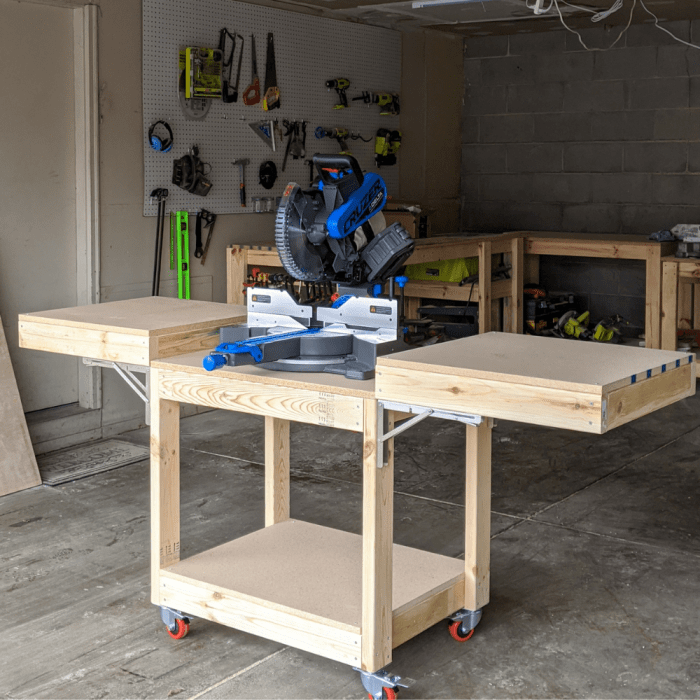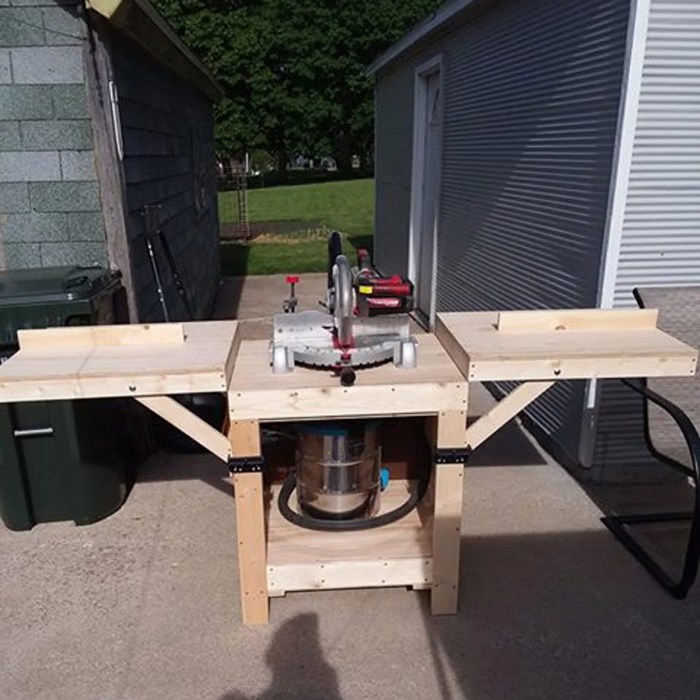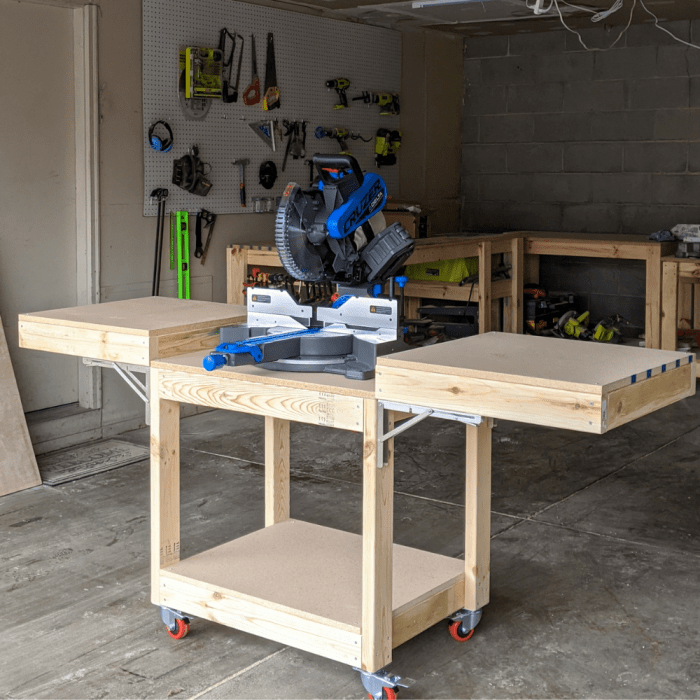DIY miter stand sets the stage for this enthralling narrative, offering readers a glimpse into a story that is rich in detail and brimming with originality from the outset. Building a DIY miter stand is a rewarding project for any woodworker, whether you’re a seasoned professional or a weekend warrior. A miter stand is an essential tool for making precise cuts, especially when working with multiple pieces of wood that need to be joined at angles.
This comprehensive guide will walk you through the process of building your own miter stand, from selecting materials to assembling the finished product. You’ll learn about the different types of miter stands, the tools you’ll need, and the steps involved in construction. We’ll also cover important safety precautions and maintenance tips to ensure your miter stand lasts for years to come.
Tips and Tricks for Using a Miter Stand: Diy Miter Stand

A miter stand is an essential tool for any DIY enthusiast or professional woodworker, providing precision and accuracy when cutting wood at various angles. Whether you’re working on a simple picture frame or a complex furniture project, mastering the use of a miter stand can significantly enhance your woodworking skills.
Achieving Accurate Cuts
Accuracy is paramount when using a miter stand. Here are some tips to ensure precise cuts:
- Double-check the angle setting: Before making a cut, always double-check the angle setting on the miter stand. A slight misalignment can lead to inaccurate cuts, especially when working with intricate projects. Use a protractor or angle gauge to verify the angle setting for greater accuracy.
- Use a sharp blade: A dull blade can cause uneven cuts and tear out the wood. Ensure the blade is sharp and clean before each use. A sharp blade will also reduce the effort required to cut through the wood, making the process smoother and more efficient.
- Secure the workpiece: Always secure the workpiece firmly to the miter stand using clamps or other appropriate methods. This prevents the wood from shifting or moving during the cut, ensuring a straight and accurate cut. Avoid using excessive force when clamping, as it can damage the workpiece or the miter stand.
- Make slow, steady cuts: When cutting, avoid rushing. Make slow, steady cuts to maintain control and accuracy. Avoid applying too much pressure, as it can cause the blade to bind or wander, resulting in an inaccurate cut.
Setting Up the Miter Stand for Different Cutting Angles, Diy miter stand
- Understand the angle scale: Familiarize yourself with the angle scale on your miter stand. Most miter stands have markings for common angles like 45 degrees, 30 degrees, and 15 degrees. Learn how to read the scale accurately to set the desired angle.
- Use a miter gauge: A miter gauge is a crucial accessory for setting precise angles on a miter stand. It helps align the workpiece with the blade at the correct angle. Make sure the miter gauge is properly seated in the miter stand’s groove and is securely locked in place before making a cut.
- Adjust the angle for different cuts: Different projects require different cutting angles. For example, a picture frame may require 45-degree cuts, while a cabinet may require 90-degree cuts. Be sure to adjust the angle setting on the miter stand accordingly to achieve the desired cut.
Troubleshooting Common Problems
- Blade binding: If the blade binds or feels stuck, it could be due to sawdust buildup or a dull blade. Clean the blade and surrounding area with a brush and ensure the blade is sharp. If the blade is still binding, check the miter stand’s alignment to ensure the blade is properly positioned.
- Inaccurate cuts: If your cuts are consistently inaccurate, check the angle setting on the miter stand and ensure the miter gauge is properly seated and locked in place. Also, check the workpiece for any warping or unevenness that could affect the accuracy of the cut.
- Wood tear-out: Tear-out occurs when the wood fibers are ripped or torn during the cut. This can be caused by a dull blade, improper blade angle, or excessive pressure during cutting. To prevent tear-out, use a sharp blade, adjust the blade angle, and apply steady, controlled pressure during the cut.
Resources and Inspiration

There’s a wealth of information and inspiration available online to help you build your own miter stand. From detailed plans to creative designs, you’ll find resources to guide you through every step of the process.
This section will provide links to valuable online resources, showcase examples of innovative miter stand designs, and offer inspiration for woodworking projects that can be completed with a miter stand.
Online Resources
The internet is a treasure trove of information for DIY enthusiasts. Here are some valuable online resources to get you started:
- YouTube: Search for “DIY miter stand” and you’ll find a vast collection of videos demonstrating various designs, construction techniques, and tips.
- Woodworking Forums: Websites like LumberJocks and WoodworkingTalk offer forums where you can connect with other woodworkers, share ideas, and ask for advice.
- Blog Posts and Articles: Many woodworking blogs and websites feature articles on building miter stands, offering detailed plans, step-by-step instructions, and helpful tips.
Innovative Miter Stand Designs
Beyond the traditional miter stand, many innovative and creative designs have emerged, offering enhanced functionality and aesthetics.
- Rolling Miter Stand: This design incorporates wheels or casters, allowing for easy mobility around the workshop.
- Adjustable Miter Stand: These stands feature adjustable height and angle settings, providing flexibility for various projects.
- Folding Miter Stand: Compact and space-saving, folding miter stands are ideal for smaller workshops or those who want to store them easily.
- Multi-Purpose Miter Stand: Some designs combine features of a miter stand with other woodworking tools, such as a table saw or router table.
Inspirational Woodworking Projects
A miter stand is a versatile tool that can be used for a wide range of woodworking projects, from simple picture frames to intricate furniture pieces. Here are some inspirational projects that can be completed with a miter stand:
- Picture Frames: Miter stands are essential for creating precise miter cuts for picture frames.
- Shadow Boxes: These decorative boxes often feature mitered corners, showcasing treasured items or artwork.
- Shelves: Miter stands are useful for building shelves with intricate angles and designs.
- Small Furniture: Miter stands are perfect for constructing small furniture pieces like end tables, coffee tables, and nightstands.
- Decorative Boxes: Miter stands can be used to create intricate decorative boxes with mitered corners and intricate designs.
By following the steps Artikeld in this guide, you can build a sturdy and functional miter stand that will help you achieve professional-quality results on your woodworking projects. With a little effort and attention to detail, you’ll be able to create a tool that will enhance your woodworking experience and take your projects to the next level.
A DIY miter stand is a great project for anyone looking to improve their woodworking skills. It’s a relatively simple build, and there are plenty of plans available online. If you’re looking for inspiration and step-by-step instructions, you can check out the DIY app , which offers a wide range of projects, including miter stands. Once you’ve built your miter stand, you’ll be able to make precise cuts for all your woodworking projects.

